The entrance of a building plays an important role in maintaining a comfortable indoor climate and protecting against cold or hot outdoor temperatures. When designing an entrance, it is important to consider the specific functionality and characteristics of the building. For example, it is important to determine how many people need to go through the door during peak hours, what aesthetic preferences there are, and how much floor space is available. In commercial buildings, two types of access products are often used: sliding doors and revolving doors. Both have their own advantages and limitations. This article discusses what to consider when choosing automatic sliding doors or revolving doors.
Sliding Doors vs Revolving Doors
Durability and Energy Efficiency
Because an automatic sliding door opens every time users want to enter or exit a building, a lot of heated or cooled air is lost. To prevent this, a draught lobby or draught portal can be created by installing two sets of sliding doors back-to-back with a minimum of 4 meters between each set. They can be configured to not open at the same time. This is a good solution to limit energy loss; however, the practicality of such a solution isn't always the best for user experience. What we often see is that a draught lobby construction with sliding doors almost always leads to irritation for users who have to wait for each other until the next door opens.
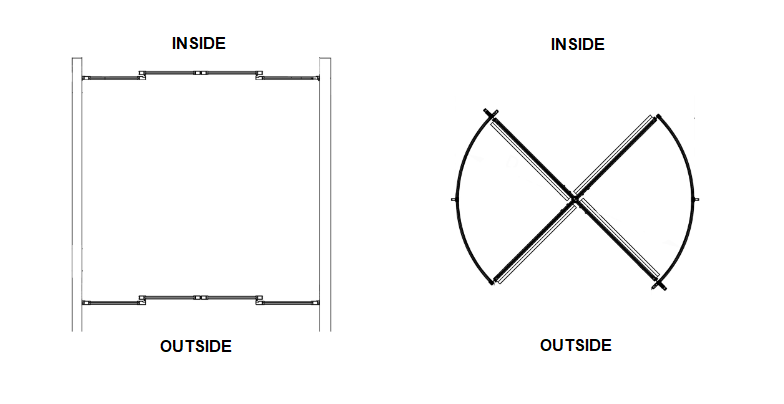
In terms of durability and energy efficiency, a revolving door is often a better choice. An additional advantage over sliding doors is that users entering or exiting a building do not get in each other's way because the doors are constantly revolving. Furthermore, revolving doors greatly limit draughts due to the principle of rotating door wings with door brush strips sealing the edges of each door leaf to create a tight seal and keep the indoor and outdoor climates separate. This is not only environmentally friendly, but it can save you money on your energy bill.
Did you know? You can compare the energy consumption of revolving doors, sliding doors or swinging doors with REST. Working in collaboration with TU Delft, Boon Edam has developed a new revolving door energy savings tool - REST - to help you calculate the energy savings of revolving doors against sliding doors. This software takes the dimensions, location and air permeability of your building and combines it with local weather information to accurately confirm the most energy-efficiency solution. The savings are shown in kWh per month and includes a simple payback time calculation.
Occupancy Density and Throughput
The occupancy density of your building is a crucial point to consider. Knowing the throughput for your entrance will help you gauge which door is best suited to your building's requirements. For example, a single automatic sliding door has a high throughput, allowing users to flow through freely. However, if a draught lobby with two sets of sliding doors has been chosen, then the passage capacity decreases significantly.
Although a revolving door has a lower capacity compared to a single sliding door, it is far better at maintaining a comfortable climate. A revolving door provides clear access and a smooth flow of pedestrian traffic. It is best suited for buildings seeking comfortable and convenient access while avoiding draughts and cold air from entering the lobby. For buildings with a higher footfall, a large revolving door like the Duotour or Tournex may be better suited. Alternatively, multiple smaller revolving doors can be used.

|
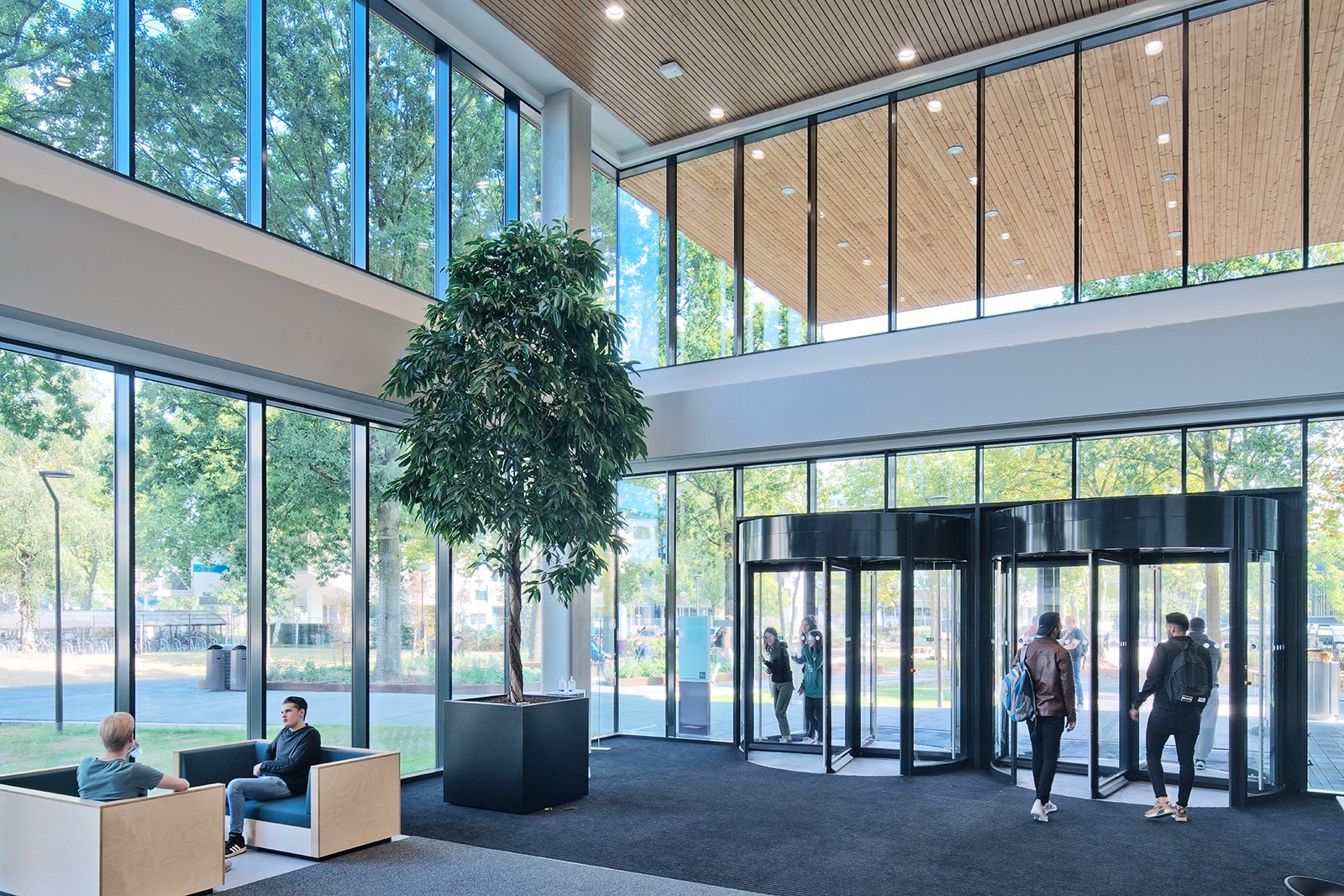
|
Available Floor Space
One automatic sliding door is space efficient, making it ideal for a range of applications; however, if energy saving is a priority to you, there might be better options available for your requirements. To get the best energy savings from sliding doors, you will require two sets of doors installed at least 4 metres apart. As a result, you lose the additional floor space. On the other hand, a revolving door can be placed inside, outside or offset in the façade and typically requires less floor space than a sliding door draught lobby.

|

|
Barrier Against Theft
Revolving doors are often considered one of the most effective ways to protect buildings against theft. Unlike a single sliding door, a revolving door forces intruders to enter and exit the building in an orderly fashion. This also applies to a sliding door lobby, making it more challenging for a burglar to run away quickly with stolen goods.
In addition, the segments of a revolving door make it harder for a thief to escape with larger items. This can deter potential theft, as criminals are aware of these limitations and risks. The use of revolving doors can also form a mental barrier for burglars. The thought that they will be faced with an orderly process of entering and exiting the building can make them reconsider the theft all together.
Aesthetics with Sliding Doors vs Revolving Doors
Sliding doors are often considered less aesthetically pleasing than revolving doors, but there are certainly ways to improve their visual appeal. One way to use sliding doors to enhance aesthetics is to use curved sliding doors like the Circleslide. Two sets of curved glass doors can be installed together to form an elegant round entrance. It adds a unique twist to the traditional sliding door without compromising accessibility or design.
There are several options to improve the appearance of automatic sliding doors. You can apply different colours or vinyl wrapping to the glass, add LED lighting, or apply different materials and finishes to create something out of the ordinary. The most common finish options for sliding doors is polyester powder-coated aluminium or stainless steel.
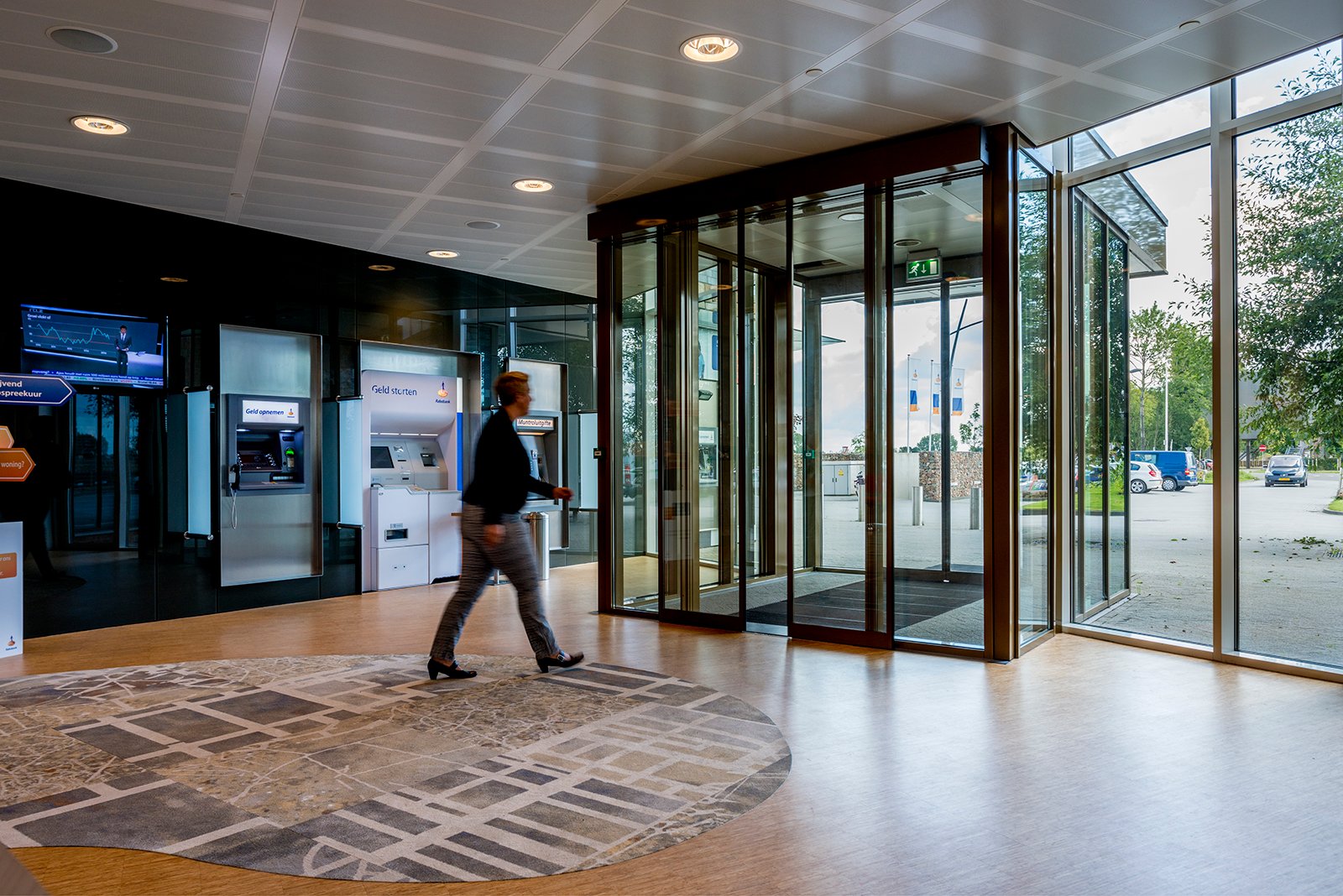
|

|
Revolving doors are well-known for their aesthetics, and with a wide range of options available, you can design a door that either blends in or stand out. A revolving door is typically constructed with aluminium and glass; however, a range of materials can be used, including stainless steel, brass, copper, or even wood. Even the canopy of the door can be fitted with decorative features like milled letters or halo lighting to enhance the overall design. There are even revolving doors with rotating showcases that enhance the aesthetic value and give a unique appearance to the entrance of a building.
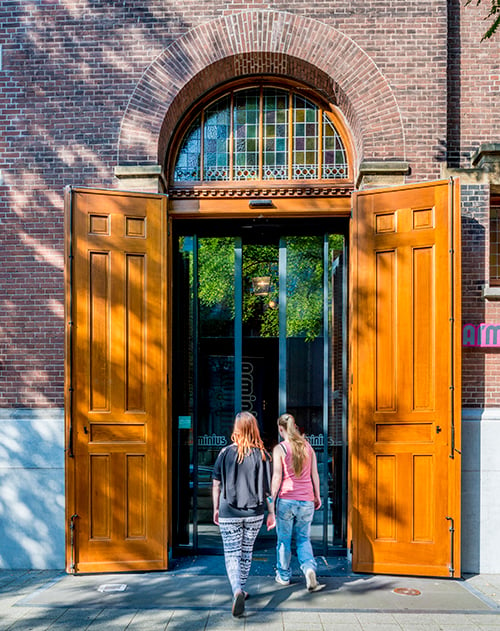
|

|
Accessibility
Accessibility is an important aspect when choosing a door, both automatic sliding doors and revolving doors. Both door types are available in different versions that are suitable for people with disabilities.
In the case of revolving doors, a minimum diameter of 3400mm in combination with 3 door wings is necessary to be suitable for wheelchair users. There is also a revolving door with a door set that automatically collapses as soon as the button for the disabled is pressed. This makes it possible to offer unobstructed access for wheelchair users even with doors with a diameter of 2800mm.
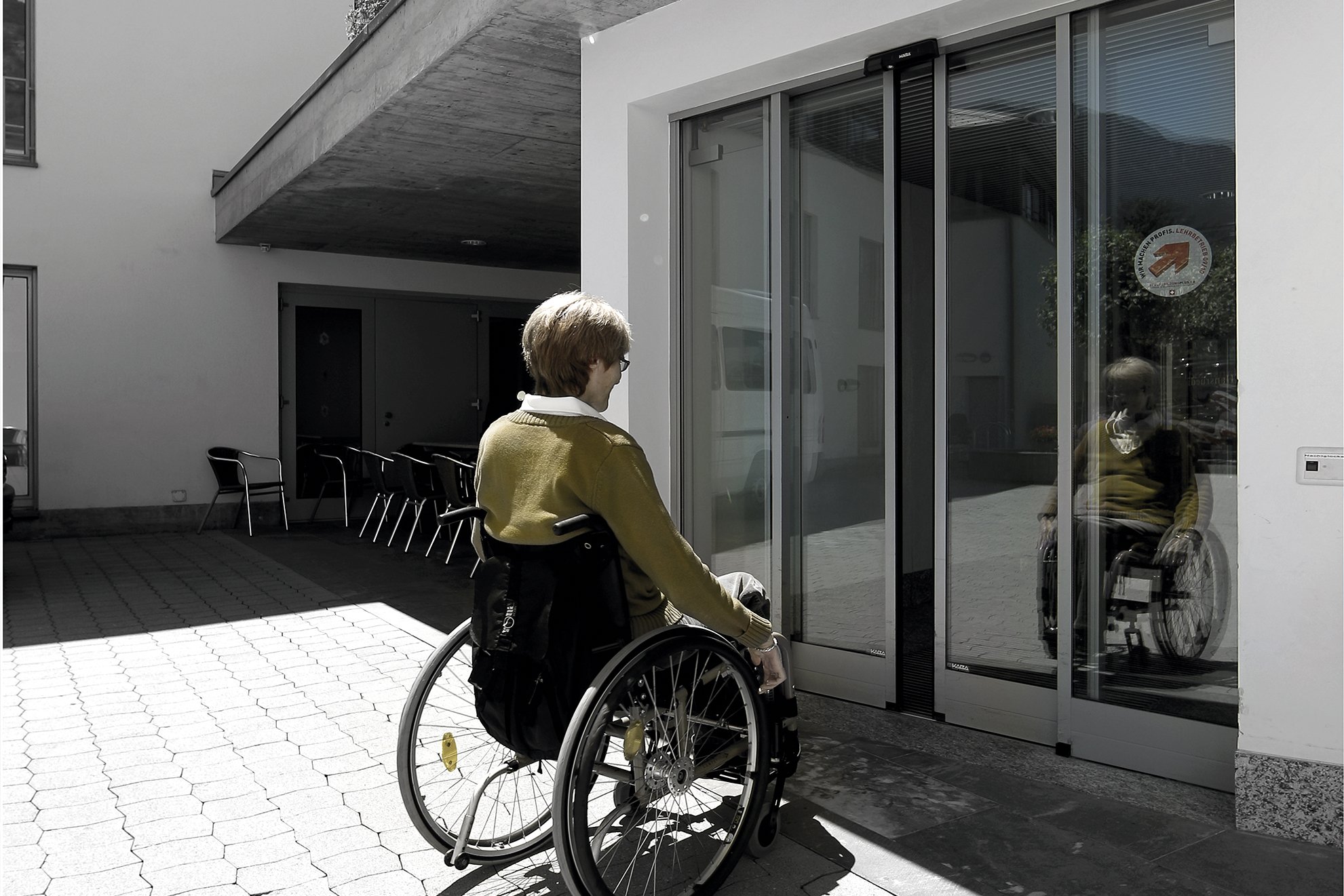
|
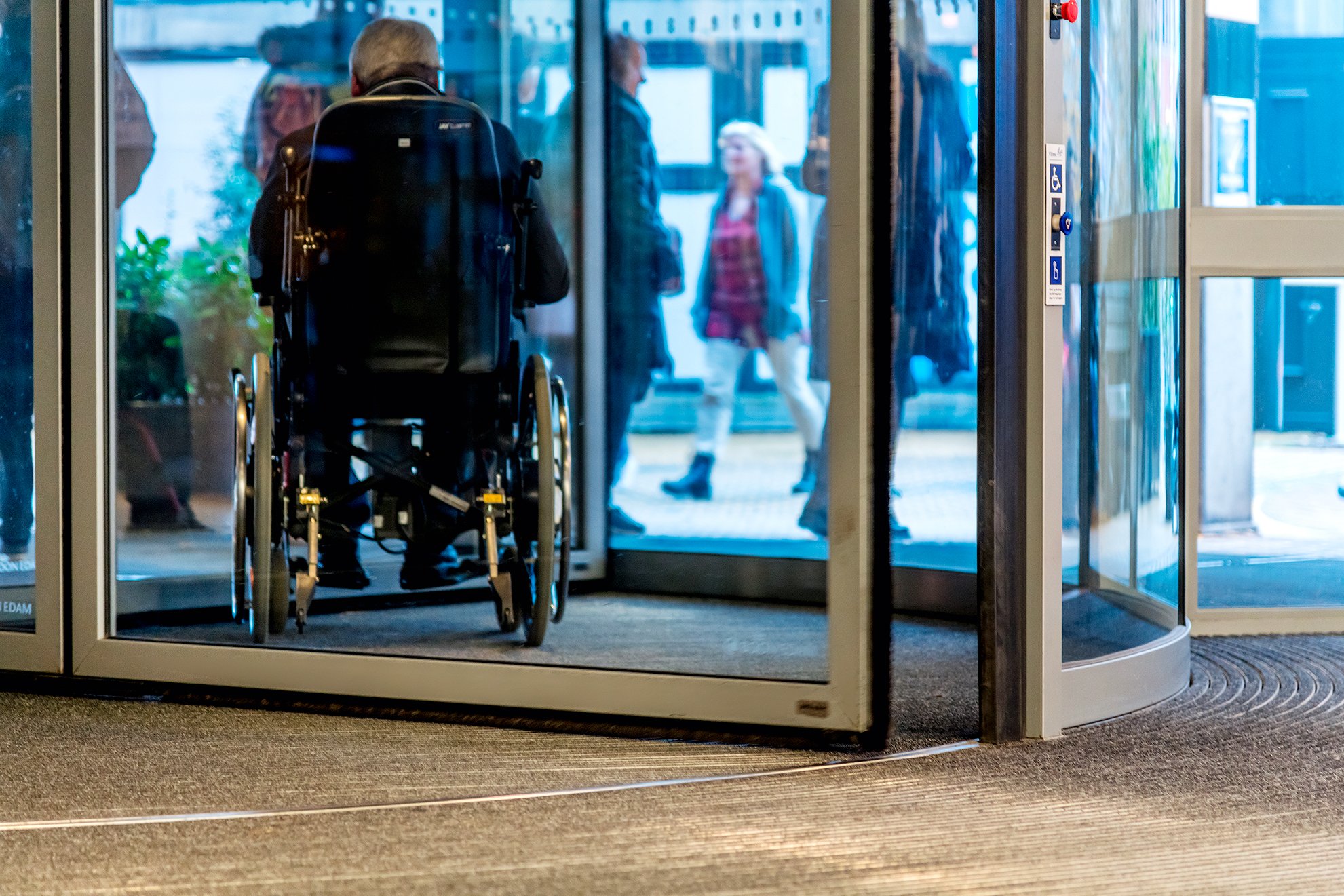
|
It is important to remember that accessibility is not limited to wheelchair users but applies to people with other types of disabilities, such as poor vision or hearing, and elderly people. Both automatic sliding doors and revolving doors can be equipped with various features such as audio signals, braille markings, and automatic door openers to make them more accessible for everyone. By considering the needs of all users, you can ensure that everyone entering your building benefits from easy, convenient access.
Conclusion
There are pros and cons for both, but deciding what entrance system is best for your building entirely depends on what is a priority to you. If you are looking for a durable, reliable and energy-efficient solution, then the Tourniket revolving door is better suited to your requirements. However, if you require an entrance that can support high throughput and you aren't concerned about energy loss or draughts, then a sliding door might be the right option for you. Consideration should be given to the specific functionality and properties, including occupancy density, throughput, aesthetics and available floor space.

.jpg)